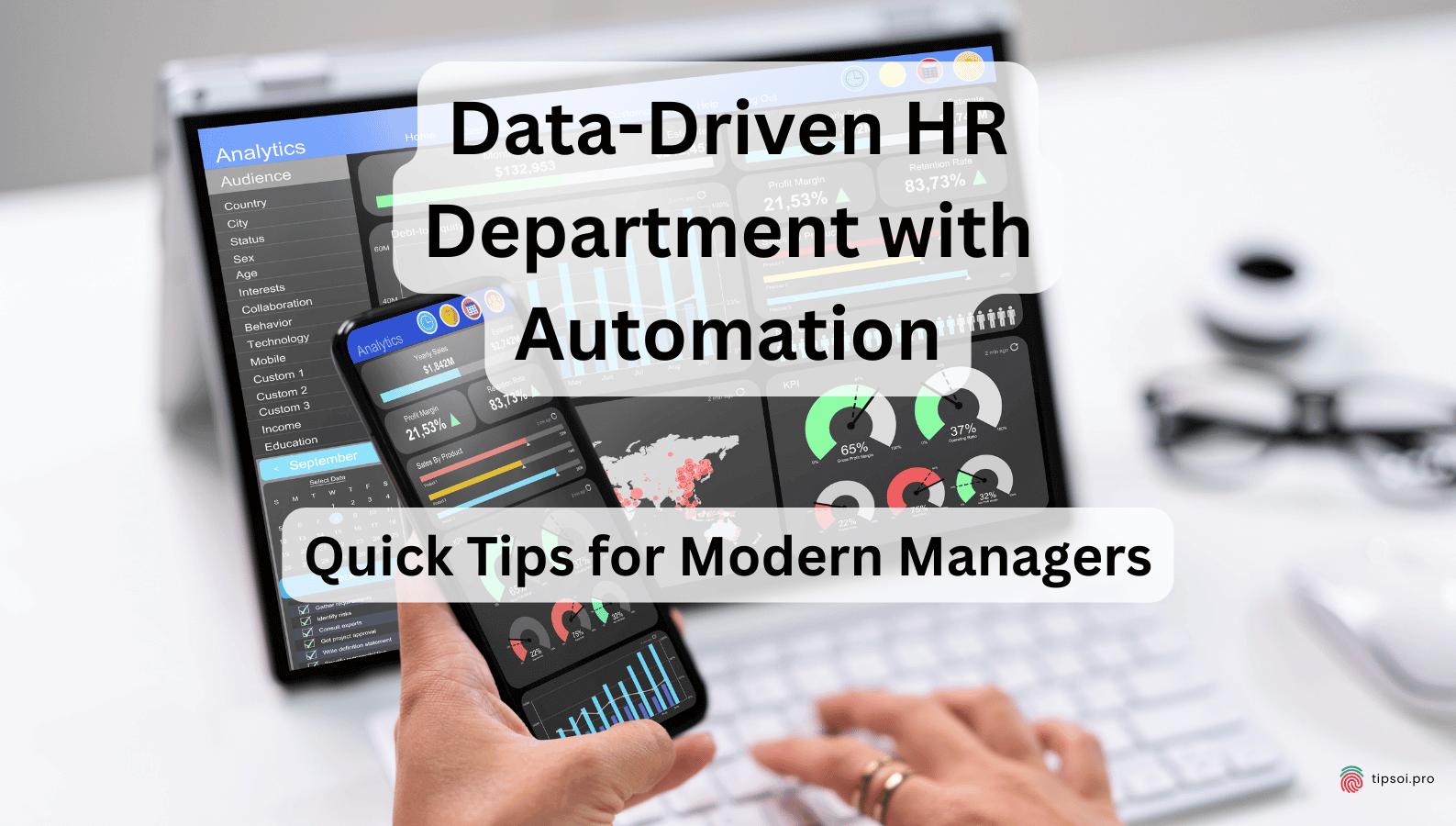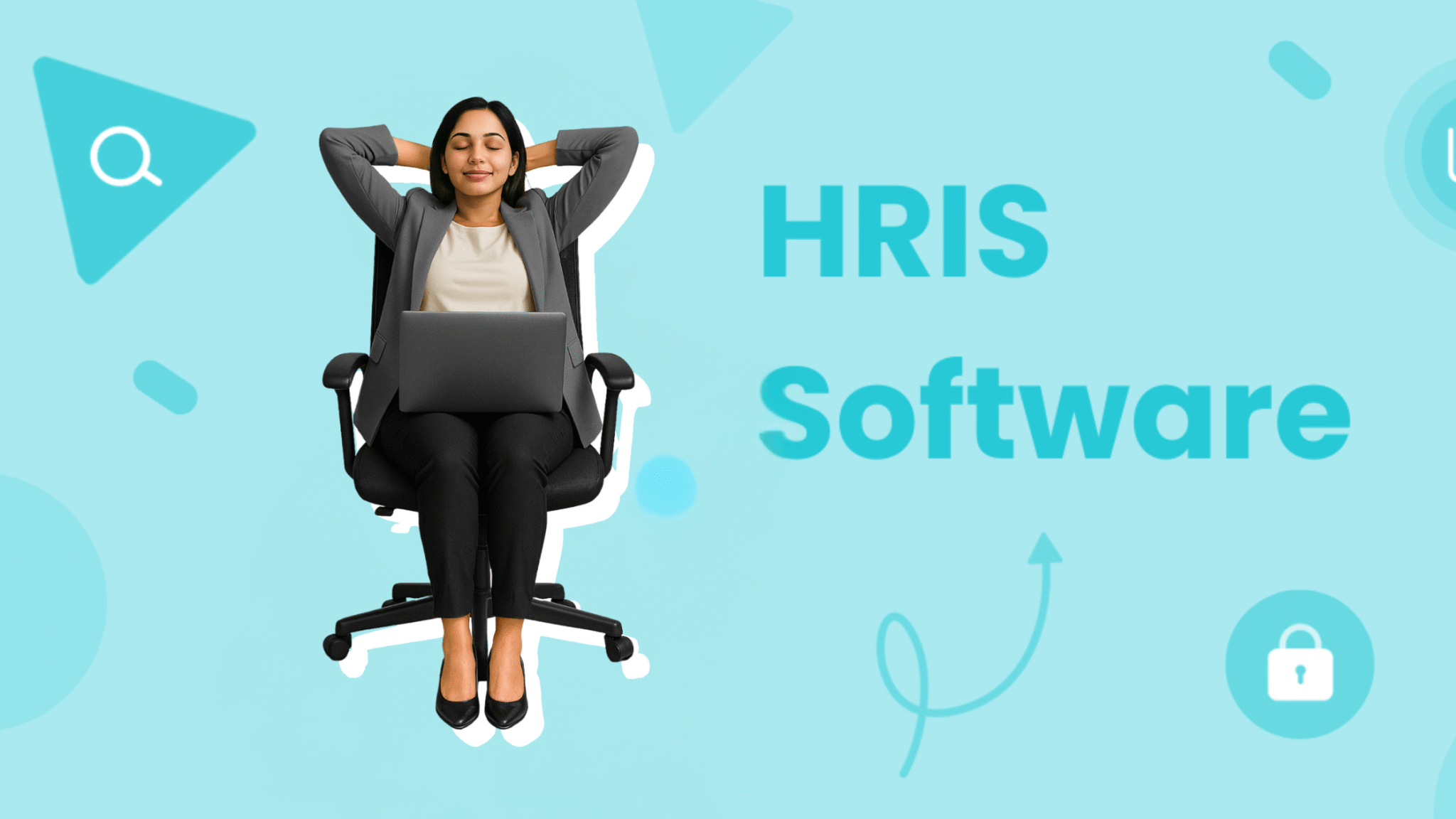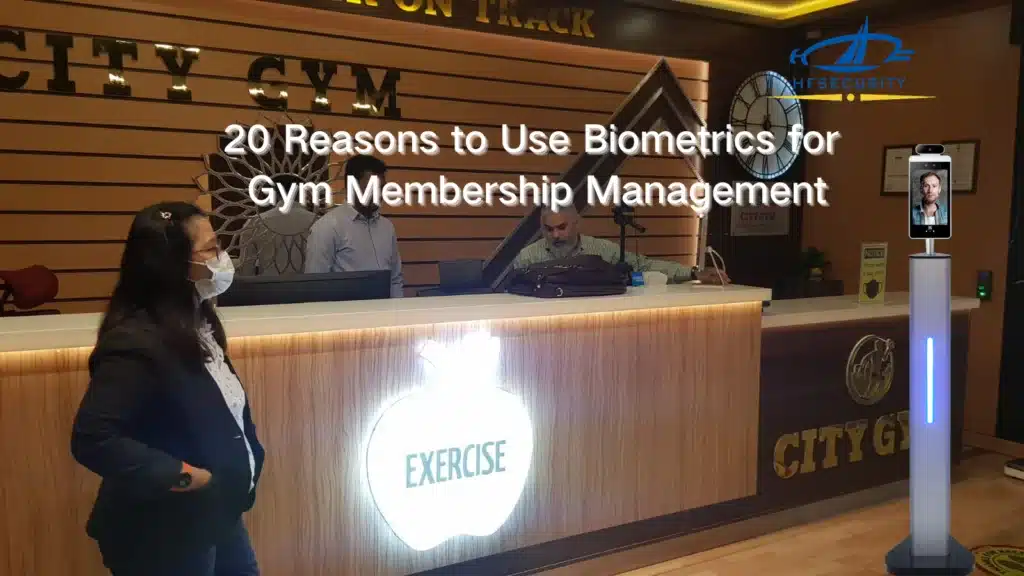Ever wondered how top companies always hire the best talent and keep their employees happy? The secret is data-driven HR Automation. By using smart tech and automation, HR professionals can make better choices about hiring, managing, and retaining workers. You can turn your HR department into a powerhouse by using data and automation tools. These tools help you gather information, spot trends, and make smart choices about your team. It’s not just for big companies—even small businesses in Bangladesh can use these tricks to get ahead.

Data-Driven HR Automation makes HR department work easier and faster. Instead of spending hours on paperwork, you can focus on the important stuff – like finding great people and helping them grow. Plus, when you use data to make decisions, you’re more likely to pick the right person for the job and keep your star employees around longer.
Key Takeaways
- Data and automation help HR make smarter decisions about hiring and managing people
- Using tech tools frees up time for HR to focus on important tasks like employee growth
- Data-driven insights lead to better recruitment, higher employee satisfaction, and improved talent management
Why Data-Driven HR Automation Matter
Data and automation make HR work easier and faster. Instead of spending hours on paperwork, you can focus on important tasks like finding great people and helping them grow. Plus, when you use data to make decisions, you’re more likely to pick the right person for the job and keep your star employees longer.
Internationally Best-selling Author, Bernard Marr states that HR now acts as a compass, guiding businesses through the shifting landscape of the corporate world. In his book Data-Driven HR he states that, HR departments could learn more about employee success, satisfaction, and involvement if they could collect, examine, and make sense of big amounts of data. This made it possible for predictive analytics to be used, which lets HR workers see problems coming and take steps to fix them before they happen.
The Role Of Data-Driven HR Automation
Data plays a crucial part in modern HR practices. It helps you make better decisions about hiring, keeping employees happy, and planning for the future. Let’s look at how data is changing HR and some of the challenges faced in Bangladesh.
Defining HR Analytics
HR analytics is all about using data to make smart choices about your workforce. It’s like having a crystal ball that shows you what’s really going on with your employees. You can use it to:
- Spot trends in hiring and quitting
- Figure out why your best workers leave
- Predict which job candidates will do well
With HR analytics, you’re not just guessing anymore. You’re using real info to make your company better. It’s a game-changer for HR teams who want to be more strategic.
Challenges In Bangladesh
In Bangladesh, HR teams face some big hurdles when it comes to using data. Here are some common issues:
- Too much paperwork: Many companies still use paper files, making it hard to analyze data.
- Scattered info: Employee data is often spread across different systems.
- Not enough tech: Some companies lack the tools to collect and crunch numbers.
- Skills gap: HR staff may not know how to work with data effectively.
These problems can make it tough for you to get the insights you need. It’s frustrating when you know data could help, but you can’t access or use it properly.
Overcoming Challenges With Automation
Automation can solve many of these data problems. Here’s how it helps:
- Digital forms replace paper, so data entry is a breeze.
- All-in-one HR systems keep your data in one place.
- User-friendly tools make analysis easier, even for beginners.
- Automatic reports save you time and give you quick insights.
Leveraging Automation For Talent Management
According to Forbes, the way HR teams handle people is changing because of automation. Companies can find and keep the best workers, train them better, and make plans for the future with its help. In the early 2000s, talent management tools helped companies keep better track of their workers’ progress and success. With these systems, HR workers could use advanced tools for data analysis, which helped them make better choices about how to manage people based on data.
Identifying High-Potential Employees
Data-driven HR Automation insights can help you spot your rising stars. Look at performance reviews, project outcomes, and skills assessments. Use this info to create a profile of your top performers.
- Set up alerts for when someone matches this profile. This way, you’ll never miss hidden talent.
- Keep an eye on trends. Is someone improving faster than others? They might be your next leader.
- Predict who might leave. Look at factors like job satisfaction surveys and time since the last promotion. Catch issues early and keep your best people.
Personalized Learning And Development
Automation makes training fit each person. It’s like having a personal coach for every employee. According to Science Direct, most of the time, personalized HRM is a type of high-performance work practice (HPWP) that is tailored to each employee’s needs and preferences. It often uses advanced HR analytics and artificial intelligence (AI) to make HR even more flexible and effective. (Source)
- Use data to see what skills each person needs. Then, suggest courses or workshops that fit.
- Track progress automatically. See who’s learning fast and who needs help.
Try these ideas:
- Online quizzes to test knowledge
- AI-powered course recommendations
- Virtual reality training simulations
This personal touch helps people learn faster and enjoy it more.
HR Automation Tools
There are many tools to help manage talent better. Here are some to try:
- Performance management software: Track goals and give feedback in real-time.
- Learning management systems: Organize courses and see who’s learning what.
- Applicant tracking systems: Sort through resumes and find the best candidates fast.
These tools save time and help make better decisions. They turn data into useful info you can act on.
Benefits For Bangladeshi Organizations
Automation in HR can really help companies in Bangladesh. Here’s how:
- Keep good employees longer: Spot problems early and fix them.
- Get more done: When HR tasks are faster, everyone has more time for important work.
- Plan for the future: Know who can step up when leaders leave.
It also helps find the right people for jobs. This means teams work better together.
Bangladeshi companies can compete globally with these tools. They help make smart choices about people, which is key to success.
Transforming Recruitment With Data-Driven HR Automation
The market for online hiring will likely reach a big amount of USD 58 billion by 2032, thanks to a steady growth rate of 6.4% per year from 2023 to 2032, according to Market Us. (Source)
Data and automation are changing how companies find and hire talent. You can make smarter decisions and save time by using the right tools and information.
Optimizing Recruitment Strategies
Data helps you find the best ways to attract candidates. You can track which job boards and social media sites bring in the most qualified applicants. This lets you focus your efforts where they work best.
You can also use data to predict which candidates are likely to succeed in a role. By looking at the skills and experience of your top performers, you can spot similar traits in applicants.
Measuring time-to-hire shows you where your process slows down. You might find that phone screenings take too long, for example. Then you can look for ways to speed things up.
Streamlining Recruitment Processes
Automation makes hiring faster and easier. AI can scan resumes and pick out the best matches for your job openings. This saves you hours of reading through applications.

Chatbots can answer common questions from candidates at any time. They can also schedule interviews, freeing up your recruiters for more important tasks.
Automated emails keep applicants updated on their status. This improves their experience and makes your company look more professional.
HR Automation Tools For Recruitment
Several HR Automation tools can help with your hiring process:
- Applicant tracking systems (ATS) organize all your candidate info in one place
- Video interview platforms let you screen candidates from anywhere
- Skills assessment tools test applicants’ abilities before you interview them
These tools work together to make your hiring more efficient. They help you find great candidates faster and with less effort.
Benefits Of Data-Driven HR Automation on Recruitment
Using data in your hiring brings many advantages. You’ll make better choices about who to interview and hire. This leads to employees who perform well and stay longer.
Data helps you spot biases in your hiring process. You can then work to make your recruitment more fair and diverse.
You’ll also save money by focusing on the most effective hiring channels. And you can show exactly how your recruitment efforts are paying off.
By using data, you turn hiring from guesswork into a science. This gives you an edge in attracting top talent in a competitive job market.
Boosting Employee Engagement With Data
Data can help you understand your employees better and create a more engaging workplace. Let’s explore how to use data and automation to boost employee engagement in your HR department. According to a LinkedIn poll, 77% of talent professionals rely on analytics to plan their workforce.
Importance Of Employee Engagement
Employee engagement is key for your company’s success. Engaged workers are more productive and likely to stick around. They also help create a positive work environment.
One great example is Walmart, a global retail giant that streamlined the hiring, onboarding, and training processes for its workers by putting in place automated HR systems. This led to a big rise in employee involvement at Walmart, with 15% more employees staying with the company and 20% more employees being happy with their jobs overall. Walmart created a more interesting place to work by using technology to make administrative chores easier and by giving employees tailored chances to grow.
Skills-based volunteering can boost engagement. It lets employees use their talents to support good causes. This makes them feel valued and connected to your company’s mission.
Engaged employees often:
- Work harder
- Come up with new ideas
- Provide better customer service
- Miss fewer workdays
By focusing on engagement, you can reduce turnover costs and improve your bottom line.
Understanding Employee Sentiment
Data helps you grasp how your employees feel about their jobs. You can use surveys, feedback tools, and analytics to spot trends and issues. According to Cognitive Market Research, in 2024, the size of the world market for HR analytics will be USD 2.07 billion. With a growth rate of 14.2% per year from 2024 to 2031, the HR Analytics market will be the fastest-growing. This growth is because making decisions based on data improves HR strategy and performance a lot.
Predictive analytics can help you:
- Identify what drives engagement in your company
- Spot early signs of burnout or dissatisfaction
- Tailor your engagement strategies to different teams or individuals
By analyzing data, you can make smarter decisions about how to keep your employees happy and motivated.
HR Automation Tools For Engagement
Many tools can help you gather and analyze employee feedback. These include:
- Pulse surveys: Quick, frequent check-ins to gauge employee mood
- Sentiment analysis: AI-powered tools that analyze text feedback
- Performance tracking software: Helps spot high performers and those who might need support
HR automation software can make these processes easier and more efficient. It frees up your time to focus on using the insights you gain.
Creating A Positive Culture In Bangladesh
In Bangladesh, using data can help you build a more engaging workplace culture. You can:
- Identify local engagement drivers
- Tailor your strategies to fit Bangladeshi work customs
- Track the impact of your engagement initiatives
Data-driven HR Automation strategies can help you:
- Improve recruitment to find the best local talent
- Understand workforce dynamics unique to Bangladesh
- Make better decisions about benefits and work policies
By using data, you can create a workplace that truly resonates with your Bangladeshi employees.
Implementing A Data-Driven HR Automation Strategy
Building a data-driven HR department takes careful planning and execution. You’ll need to set clear goals, choose the right tools, and analyze data continuously to make smart decisions.
Step-By-Step Guide
To create a data-driven HR strategy in Bangladesh:
- Assess your current HR processes
- Pick key metrics to track
- Choose automation tools for data collection
- Train your team on new systems
- Set up dashboards to visualize data
- Start collecting and analyzing data
- Make decisions based on insights
- Review and adjust your strategy regularly
Start small and expand as you get more comfortable with data analysis. Don’t try to change everything at once. Focus on one or two areas first, like recruitment or employee engagement.
Setting Clear Goals
Your data-driven HR Automation strategy needs clear, measurable goals. Think about what you want to achieve:
- Reduce turnover by 15%
- Improve employee satisfaction scores
- Speed up the hiring process by 20%
Once you have goals, pick metrics that align with them. For hiring, you might track time-to-fill and quality of hire. For engagement, look at survey scores and participation rates.
Choose the right technology to support your goals. An applicant tracking system can help with hiring data. Employee feedback tools gather engagement info.
Ongoing Data Analysis
Data analysis isn’t a one-time thing. You need to look at your HR data regularly:
- Check dashboards weekly
- Run in-depth reports monthly
- Do a big-picture review quarterly
Look for trends and patterns in your data. Are certain departments seeing more turnover? Is employee satisfaction dropping?
Use your findings to make changes. If exit interviews show people leaving for better pay, you might need to adjust your compensation. If engagement is low, try new team-building activities.
Always test new ideas and measure the results. This helps you continuously improve your HR strategies.
Role Of HR Professionals
As an HR pro, your job is changing. You’re not just keeping records anymore. You need to be a data interpreter and strategic partner.
Learn to:
- Read and understand data reports
- Spot important trends
- Connect data to business goals
- Present findings to leadership
Your insights can shape company strategy. If data shows high-performers leaving, you might suggest new retention programs. If certain skills are hard to find, you could propose training existing staff.
Remember, data is a tool to help you make better decisions. It doesn’t replace your expertise. Use your knowledge of people and the company to put data in context.
How Tipsoi Can Help You Building Data-Driven HR Automation
Tipsoi specializes in creating custom HR automation solutions tailored to your unique needs. We’ll help you streamline processes, improve efficiency, and empower your team to focus on what truly matters – your people.
Let’s transform your HR department together!
How can I get started with data-driven HR if my company relies on paper-based systems?
Start small by digitizing key processes like onboarding or time-off requests. Gradually transition to an integrated HR system to centralize data and make it easier to analyze.
What are some affordable HR automation tools for small businesses in Bangladesh?
Look for cloud-based solutions like Zoho People, BambooHR, or Gusto. These offer a range of features at a lower cost compared to enterprise-level systems.
How can I convince my HR team to embrace data analysis if they lack experience?
Start with basic training and workshops to familiarize them with key concepts. Emphasize how data insights can improve their decision-making and free up time for more meaningful work.
Which HR metrics should I prioritize for tracking and analysis?
Start with essential metrics like time-to-hire, cost-per-hire, employee turnover, and employee engagement scores. As you get more comfortable, you can explore more advanced metrics like talent pipeline health and diversity metrics.
How can data-driven HR help me create a more positive workplace culture?
By analyzing employee feedback and engagement data, you can identify pain points and areas for improvement. This allows you to tailor your initiatives to specific needs and create a more supportive environment.
What are some red flags to look for in employee data that might signal potential turnover?
Monitor for trends like declining performance, decreased participation in company activities, or negative sentiment in feedback channels. Early detection allows you to intervene and address issues proactively.
Is there a risk of relying too much on data and automation in HR?
Yes, it’s important to strike a balance. While data provides valuable insights, human judgment and empathy remain crucial in HR decisions.
How can I use data to improve my company’s recruitment efforts in Bangladesh?
Analyze data to identify the most effective recruitment channels, understand the local talent landscape, and tailor your messaging to resonate with Bangladeshi job seekers.
What role does technology play in creating a data-driven HR department?
Technology is essential for collecting, storing, analyzing, and visualizing HR data. Tools like HRIS platforms, applicant tracking systems, and feedback tools are vital for this process.
How can I stay updated on the latest trends in data-driven HR and automation?
Attend industry conferences and webinars, read publications like HR Technologist or HR Dive, and network with other HR professionals who are passionate about data and technology.









